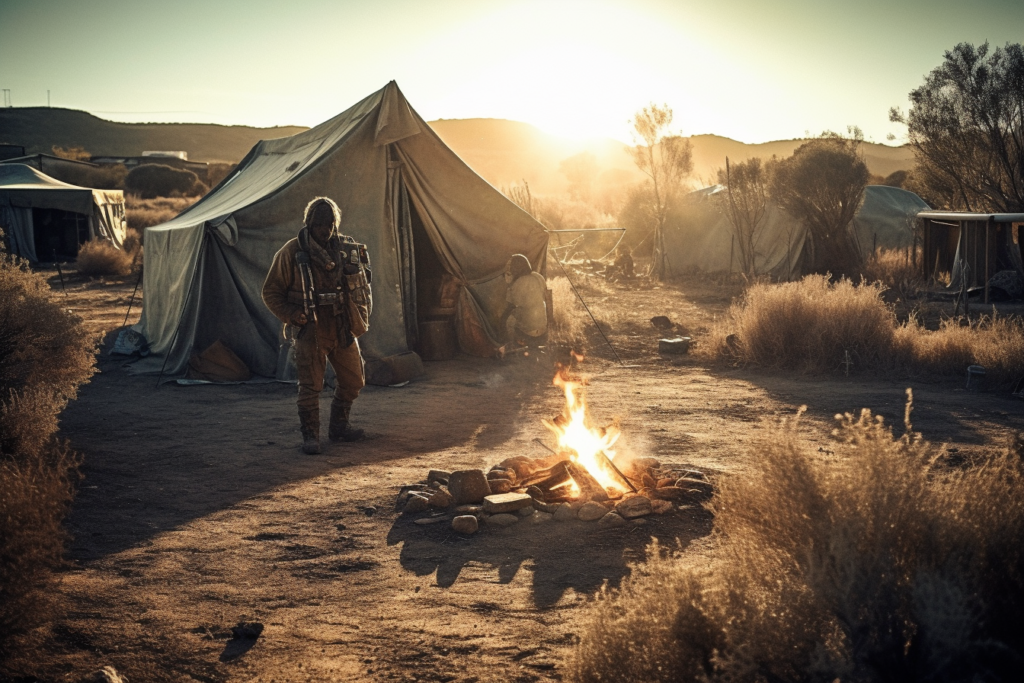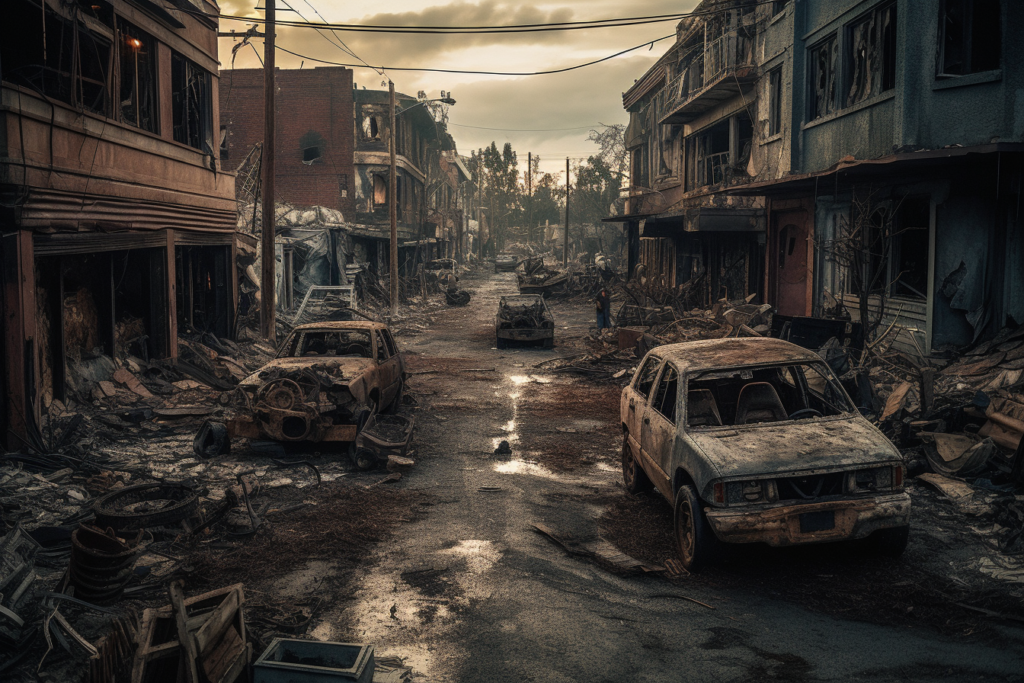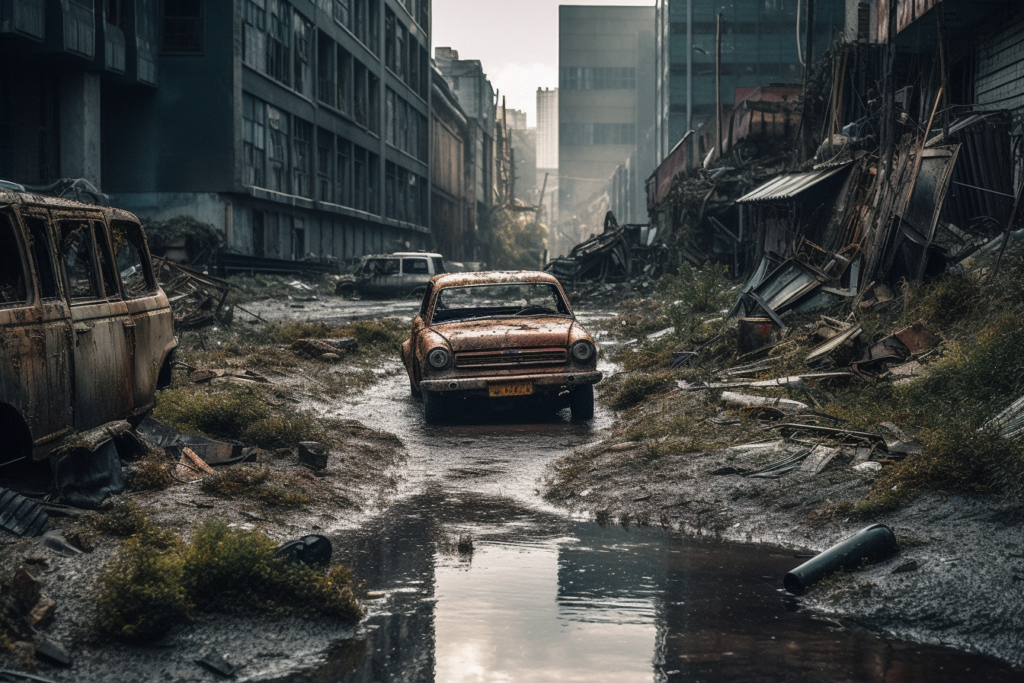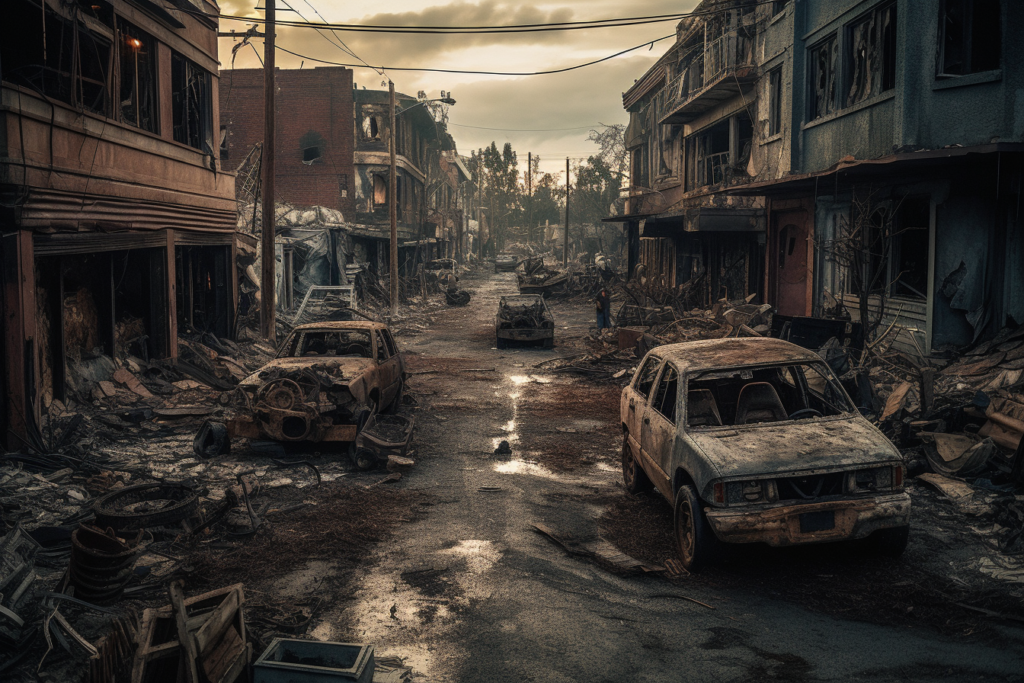
Analysis of Survival Strategies
In the realm of post-apocalyptic literature, the concept of survival transcends mere existence, evolving into an art form shaped by the extremities of a new world order. This literary exploration delves into the intricate survival strategies that authors have imagined, painting a vivid picture of resilience and adaptability in the face of apocalyptic adversity. Our journey traverses the desolate landscapes of dystopian fiction, unearthing the essence of human endurance.
Exploring Survival Tactics in Post-Apocalyptic Fiction
Introduction to Post-Apocalyptic Survival Strategies
Post-apocalyptic fiction presents a diverse tapestry of survival tactics, each uniquely crafted to fit the desolate and often perilous new worlds that emerge after cataclysmic events. This section ventures into the ingenious survival methods that characters in post-apocalyptic novels employ, not just to endure but to rebuild and thrive amidst ruins.
Adapting to a New World Order
In “The Road” by Cormac McCarthy, the struggle to survive in a barren world illustrates the raw essence of human determination. The characters face a devastated landscape, where the basics of food, water, and shelter become their daily quest. This harrowing narrative mirrors the primal aspects of survival, emphasizing the need for resourcefulness and resilience in the face of extreme adversity.

Forming New Societies and Cultures
Emily St. John Mandel’s “Station Eleven” vividly portrays the rebuilding of society post-collapse. The characters navigate a world where the old norms have vanished, leading to the creation of new societal structures and cultures. This reflects an important aspect of post-apocalyptic survival – the ability to adapt socially and culturally to a radically changed world.
Leveraging Technology in Ruins
Paolo Bacigalupi’s “The Water Knife” explores survival in a future ravaged by water scarcity. Here, the mastery of remaining technologies and resources is crucial for survival. This narrative underlines the importance of technological adaptability and strategic resource management in a world where environmental catastrophes dictate the rules of survival.
Psychological Endurance in Apocalyptic Settings
In “Bird Box” by Josh Malerman, survival hinges on mental and emotional strength. The characters must navigate a world filled with unseen horrors, relying on their psychological resilience. This highlights the often overlooked aspect of mental fortitude in survival situations, both in the realm of fiction and in real-life scenarios.
Final Reflections
The exploration of survival tactics in post-apocalyptic fiction uncovers a rich spectrum of human adaptability and ingenuity. These stories are not just tales of despair and ruin; they are testaments to the enduring human spirit facing the ultimate test of survival.
Reimagining Progress and Survival: The Impact of Post-Apocalyptic Science Fiction Narratives” from SciFiBlog.org. This article discusses the influence of post-apocalyptic science fiction narratives on our perceptions of progress and survival. The link is here

Exploring The Art of Scavenging and Resourcefulness in Post-Apocalyptic Fiction
Introduction to Scavenging and Resourcefulness
In the desolate landscapes of post-apocalyptic fiction, scavenging and resourcefulness are not just skills; they are vital lifelines that dictate the thin line between survival and demise. This section delves into how various characters in post-apocalyptic novels master the art of utilizing what little they have to create a means for survival.
The Necessity of Scavenging
In “The Road” by Cormac McCarthy, the protagonists’ journey through a ravaged world underscores the critical role of scavenging. Their constant search for food, shelter, and basic supplies is a stark reminder of how survival often hinges on the ability to find and utilize whatever remnants are left in a collapsed world. This scenario is a vivid portrayal of how scavenging becomes an indispensable skill in extreme conditions.
Innovating with Limited Resources
In the world of “A Boy and His Dog” by Harlan Ellison, the characters exemplify innovation with limited resources. They demonstrate how ingenuity can turn the most mundane items into valuable survival tools. This narrative explores the concept of improvisation – a key element in post-apocalyptic survival that resonates with the real-world skill of making the most out of limited resources.

Re-purposing and Recycling in a New World
The novel “Station Eleven” by Emily St. John Mandel presents a world where re-purposing and recycling are not just environmentally conscious choices, but necessary practices for survival. The characters find new uses for old objects, showcasing the importance of adaptability and creative thinking in post-apocalyptic scenarios. This echoes the increasing relevance of sustainable practices in our own world.
Building Survival Skills from Scarcity
In “The Hunger Games” by Suzanne Collins, the protagonist, Katniss Everdeen, demonstrates how scarcity can breed resourcefulness. Her ability to utilize her surroundings for sustenance and protection highlights how essential survival skills can be honed even in the most dire circumstances. It’s a lesson in making the most out of every available resource, a skill that’s invaluable both in fiction and reality.
Final Reflections
The art of scavenging and resourcefulness in post-apocalyptic fiction is a testament to human ingenuity in the face of adversity. These stories provide not just a window into imagined worlds of scarcity but also offer insights into the practical skills of survival that can be applied in our own lives.
Building Communities: Beyond Individual Survival in Post-Apocalyptic Fiction

Introduction to Community Building in Apocalyptic Settings
In the aftermath of apocalyptic events, the concept of community takes on a new, vital significance. Post-apocalyptic fiction often shifts focus from individual survival to the collective effort of building and sustaining communities amidst chaos. This section explores how various narratives illustrate the power of unity and collaboration in ensuring survival and rebuilding civilization.
The Strength of Collective Effort
In “Station Eleven” by Emily St. John Mandel, the emphasis is on how individuals come together to form communities, preserving art, culture, and human connections. This narrative highlights the importance of collective effort and mutual support in overcoming the challenges of a post-apocalyptic world. It underscores the idea that survival is not just about physical sustenance but also about maintaining social structures and human relationships.
Rebuilding Societies from Ruins
The novel “The Postman” by David Brin delves into the rebuilding of society after a catastrophic collapse. It illustrates how leadership, communication, and shared goals can inspire people to rebuild civilizations from ruins. This narrative reflects the real-world necessity of social organization and collaboration in the face of large-scale disruptions.

The Role of Trust and Cooperation
In “The Walking Dead” graphic novel series, the story revolves around survivors banding together to face threats both human and undead. Central to their survival is the theme of trust and cooperation within the group. This aspect of post-apocalyptic survival emphasizes the importance of building trustworthy relationships and working cooperatively to overcome common challenges.
Diversity and Inclusivity in New Societies
Octavia Butler’s “Parable of the Sower” presents a vision of community-building that values diversity and inclusivity. The protagonist’s journey towards creating a new community, in a world marred by environmental disasters and social chaos, showcases the strength that comes from embracing diversity. This reflects a crucial aspect of building resilient communities – the recognition and integration of diverse perspectives and skills.
Final Reflections
The theme of building communities in post-apocalyptic fiction provides profound insights into the human need for connection and collaboration. These narratives serve as a reminder that in the face of overwhelming challenges, the collective strength, and unity of communities can be the key to not just surviving but thriving.
Exploring Post-Apocalyptic Worlds: Lessons from Fiction” from EverydayExplorer.site. This article delves into the lessons that can be learned from fictional post-apocalyptic worlds, including the value of survival, adaptation, the need for a strong sense of community, and the importance of hope and human connection. The link is here
Real-World Parallels and Thematic Exploration

Survival Lessons from Fictional Worlds
The lessons gleaned from post-apocalyptic fiction are not confined to the pages of a book. They reflect broader truths about human ingenuity and adaptability. For instance, the resourcefulness depicted in “The Road” can be paralleled with real-world survival skills like foraging, basic first aid, and resource management, skills that are vital in any emergency situation.
Building Resilient Communities: A Real-World Necessity
Echoing the themes of “Station Eleven,” the importance of community in survival scenarios is just as crucial in the real world. In times of crisis, be it natural disasters or other catastrophic events, the strength and support of a community can be the cornerstone of recovery and rebuilding. This narrative teaches us that in survival, the collective often triumphs over the individual.
Adapting to New Realities: The Essence of Dystopian Adaptability in Post-Apocalyptic Fiction
Introduction to Adaptability in Dystopian Settings
In the realms of post-apocalyptic fiction, adaptability emerges as a key theme, reflecting the necessity for characters to navigate and thrive in drastically altered environments. This exploration delves into how these narratives portray the critical importance of flexibility and innovation in the face of new and challenging realities.
Navigating Unforeseen Challenges
Post-apocalyptic settings often thrust characters into unforeseen challenges, demanding rapid adaptation to survive. This aspect of dystopian fiction mirrors our own world’s unpredictability, emphasizing the need for flexibility in response to sudden changes, be it environmental catastrophes, societal upheavals, or personal crises.
The Role of Innovation and Creativity
In a world where traditional norms and systems have collapsed, innovation and creativity become survival tools. Characters in these stories often devise ingenious solutions to overcome scarce resources and hostile environments. This mirrors the real-world necessity of thinking outside the box, especially in times of scarcity or hardship.

Emotional and Psychological Adaptability
Beyond physical survival, emotional and psychological adaptability play a crucial role in dystopian narratives. Characters who can mentally and emotionally adjust to new realities tend to navigate their challenges more effectively. This aspect highlights the importance of mental resilience and emotional intelligence in coping with change and adversity.
Building New Social Structures
The collapse of existing social structures in post-apocalyptic worlds often leads to the formation of new ones. Characters must adapt to these new social dynamics, which can include altered power structures, new forms of governance, and different community roles. This reflects the human capacity to not only adapt to but also actively shape new societal norms and structures.
Final Reflections
The exploration of adaptability in post-apocalyptic fiction underscores its significance in the face of drastic change. These narratives offer insights into the human spirit’s remarkable ability to adjust, innovate, and persevere, providing valuable lessons on resilience and adaptability that resonate in our own lives.
Conclusion
Through this exploration of post-apocalyptic literature and its real-world parallels, we uncover a profound truth: the strategies for survival in fiction are deeply intertwined with actual survival skills. This genre does more than entertain; it educates and inspires. We invite you to share your thoughts on these survival strategies and explore related literature, broadening your understanding of both the fictional and real aspects of survival.

As we wrap up our exploration of the enthralling world of post-apocalyptic literature, we extend an invitation to you, our readers, to deepen your engagement with this genre:
- Share Your Insights: Which survival strategies in post-apocalyptic fiction have intrigued you the most? Do you see any parallels between these fictional tactics and real-life survival skills? We’re eager to hear your thoughts! Join the conversation in our comments section or connect with us on our social media platforms. Your insights and perspectives are invaluable in enriching our community’s dialogue and appreciation of this genre.
- Subscribe for More: For continued engagement with the fascinating realm of literature and survival, subscribe to our newsletter. You’ll get regular updates on our latest blog posts, insightful book reviews, and exclusive content tailored for fans and explorers of post-apocalyptic fiction.
Your enthusiasm and curiosity drive our literary journey. Together, let’s keep delving into the resilience of the human spirit and the imaginative narratives that post-apocalyptic literature unveils.
Embark on this literary adventure with us – where the lines between fiction and reality blur, and the art of survival takes center stage.
